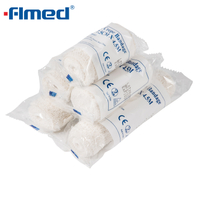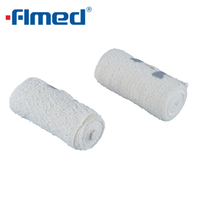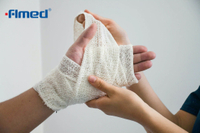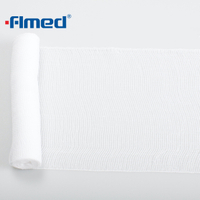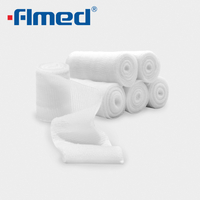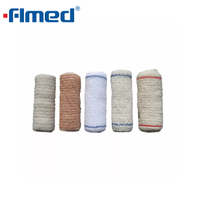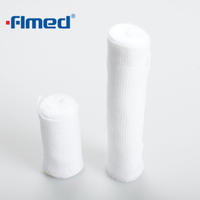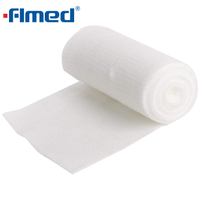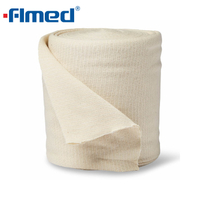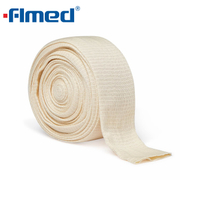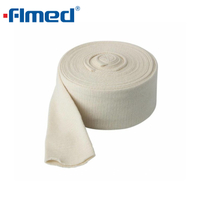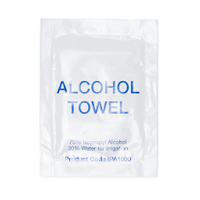
In both clinical and home healthcare settings, medical gloves are essential for infection control and patient safety. Among them, sterile gloves play a critical role in procedures that require a contaminant-free environment, such as surgeries, catheter insertions, wound care, and certain diagnostic examinations. However, while the importance of using gloves is well understood, proper storage of medical gloves is often overlooked.
Improper storage can degrade glove material, compromise barrier integrity, and even destroy sterility—rendering gloves ineffective or unsafe.
1. Why Proper Storage of Medical Gloves Matters
Medical gloves, whether sterile or non-sterile, are made from sensitive materials like latex, nitrile, or vinyl, which are vulnerable to environmental factors. When gloves are exposed to moisture, light, heat, or contaminants, their structure can degrade. This impacts:
Sterility (for sterile gloves)
Material integrity (puncture resistance, flexibility)
Shelf life
Protective barrier function
Compromised gloves increase the risk of pathogen transmission, allergic reactions, and equipment contamination during patient care.
2. Understanding Sterile vs. Non-Sterile Medical Gloves
Before diving into storage practices, it’s important to distinguish the two main types of medical gloves:
Sterile Gloves
Sterile gloves are individually packaged and sterilized using methods such as gamma radiation or ethylene oxide gas. They are used for:
Sterility is critical. Once compromised, the gloves must not be used in sterile environments.
Non-Sterile Gloves
These gloves are typically used for general medical care, such as:
Because sterile gloves are more sensitive, their storage must meet a higher standard.
3. Optimal Environmental Conditions for Glove Storage
Temperature
Store gloves in a cool, dry place. Most manufacturers recommend keeping gloves at temperatures between 15°C to 30°C (59°F to 86°F).
Avoid areas near:
Heat can degrade rubber and latex over time, making gloves brittle and reducing elasticity.
Humidity
Moisture can damage packaging and lead to microbial contamination. Maintain a relative humidity of 40–60%, and avoid storing gloves in:
Bathrooms
Laundry rooms
Damp basements
For sterile gloves, humidity can compromise the sterilized seal.
Light Exposure
UV rays and fluorescent lighting can weaken glove materials. Store gloves in opaque boxes or containers away from direct sunlight.
Ventilation
Poor airflow can trap moisture and lead to mold or material degradation. Ensure the storage space is well-ventilated but free from dust and pollutants.
4. Packaging Integrity: The First Line of Defense
Whether gloves come in individual pouches, dispenser boxes, or bulk cartons, the packaging is crucial in maintaining their condition.
Do not open sterile glove packages until use.
Inspect packaging regularly for tears, punctures, or discoloration.
Avoid stacking heavy items on glove boxes to prevent crushing.
Store gloves off the floor on shelves or in cabinets to avoid contact with dirt, pests, or flood water.
If a glove package is damaged or compromised, discard it—even if the gloves appear unused.
5. Rotating Stock: First In, First Out (FIFO)
Gloves have a shelf life, typically ranging from 3 to 5 years depending on material and manufacturer.
Best practice:
Always check expiration dates before use.
Organize inventory so the oldest stock is used first.
Label opened boxes with the date they were first accessed.
Do not use gloves past their expiration date, as elasticity and strength may be reduced.
Even unopened boxes can degrade over time if stored poorly.
![forlongmedical forlongmedical]()
6. Storage Solutions for Different Settings
Hospitals and Clinics
In professional healthcare environments, maintaining the integrity and sterility of medical gloves is a regulatory and safety priority. Gloves—especially sterile gloves—should be stored in designated medical-grade storage cabinets that offer:
Temperature and humidity control to prevent degradation of glove materials.
Clear labeling systems to enable quick rotation of stock based on expiration dates (First-In-First-Out).
Locking mechanisms to restrict unauthorized access and ensure controlled distribution, reducing misuse or contamination.
Additionally, glove storage should be located close to point-of-use areas (e.g., operating rooms, treatment bays) to facilitate fast access without compromising cleanliness.
Pharmacies and Distributors
For larger-scale storage and distribution, pharmacies and medical supply warehouses must prioritize clean, climate-controlled storage zones. Best practices include:
Storing gloves on pallet racks or shelving that is raised off the floor to prevent moisture exposure or pest contamination.
Maintaining good airflow around cartons to avoid hot spots or humidity buildup, especially in non-air-conditioned facilities.
Implementing inventory control systems with barcode tracking to monitor stock levels, reduce overstocking, and manage expiration timelines.
It is also advisable to avoid stacking heavy boxes, which may crush the packaging or compromise the seal of individually packed sterile gloves.
Home Healthcare
In home care settings, users must replicate professional hygiene as closely as possible. Glove storage tips include:
Store gloves in a sealed plastic bin, drawer, or cabinet to keep them away from dust, pets, and kitchen vapors.
Avoid storing gloves in high-moisture areas like bathrooms or laundry rooms, where humidity can weaken packaging and promote microbial growth.
Keep gloves away from direct sunlight and heat sources—such as windows, stovetops, and vehicle interiors—as these conditions degrade glove materials.
For sterile gloves, always leave them in their original packaging until just before use to maintain sterility. If a glove package is opened or torn, discard it to avoid contamination.
For caregivers handling wound care or chronic conditions at home, having a dedicated, organized storage space—even a small one—can significantly enhance infection control and treatment outcomes.
7. Transportation Considerations
Sometimes gloves are exposed to extreme conditions during shipping, especially if ordered online or transported long distances.
Tips to reduce damage:
Choose suppliers who use climate-controlled shipping
Inspect packages immediately upon receipt
Avoid ordering during high-temperature seasons if storage may be delayed
Don’t leave glove shipments in vehicles for extended periods
This is especially critical for sterile gloves, where seal integrity must remain intact.
8. How Improper Storage Affects Performance
When gloves are exposed to heat, moisture, or sunlight, they may:
Tear more easily during donning
Lose elasticity, making them uncomfortable or ill-fitting
Become discolored or sticky
Develop microscopic holes invisible to the naked eye
Lose their sterile barrier function
In clinical settings, these risks can lead to increased infections, reduced patient trust, and even regulatory penalties.
9. Tips for Handling Sterile Gloves Before Use
Even with perfect storage, poor glove handling can undo the benefits. Follow these steps:
Always wash hands before opening a sterile glove package
Check for damage on the outer and inner wrappers
Don’t place sterile gloves on dirty surfaces
Don gloves using a no-touch technique or sterile field
Discard any glove that touches a non-sterile item
These practices help preserve the sterile field in operating rooms, wound care, and sensitive procedures.
10. Environmental Responsibility in Glove Storage
Disposal and overuse of gloves contribute to medical waste. Storing gloves correctly reduces unnecessary waste caused by:
Consider using biodegradable or eco-conscious gloves where appropriate. Also, avoid over-ordering to minimize expired inventory.
Final Thoughts
Proper storage of medical gloves, especially sterile gloves, is more than just good practice—it’s a critical part of infection control and patient safety. From hospitals to homes, ensuring your gloves are stored under the right conditions helps maintain their effectiveness, integrity, and sterility.
When medical gloves are compromised, they not only fail to protect—they introduce new risks. That’s why healthcare professionals and caregivers alike must treat glove storage with the same diligence as glove selection.
If you are sourcing high-quality medical gloves or looking for expert guidance on safe usage and storage, we encourage you to explore the product range and resources available at www.forlongmedical.com. Forlong Medical is committed to providing reliable, certified, and performance-driven medical supplies for today’s healthcare needs. To learn more or get in touch, visit their website today.

 English
English

